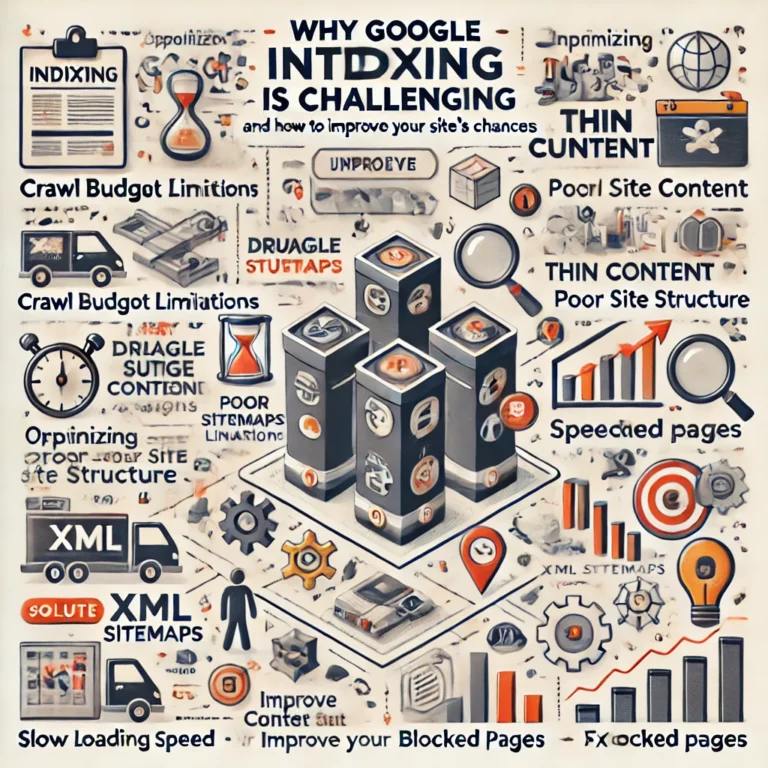What Is Google Penguin 4.0 and Its Role in Core Algorithm?
In the ever-evolving world of search engine optimization (SEO), understanding Google’s algorithm updates is crucial for maintaining and improving website rankings. One such pivotal update is Google Penguin. Launched to combat web spam and manipulative link practices, Google Penguin has significantly influenced how websites are ranked. This article delves into the intricacies of Google Penguin 4.0, its integration into Google’s core algorithm, and its impact on search results. By the end of this comprehensive guide, you’ll have a clear understanding of how to navigate the challenges posed by Google Penguin and ensure your website remains in Google’s good graces.
What is Google Penguin
Google Penguin is an algorithm update introduced by Google to target and penalize websites that engage in manipulative link-building practices. Its primary purpose is to ensure that search results are fair and relevant by demoting sites that use spammy or low-quality backlinks to artificially boost their rankings.
- Targets manipulative link-building practices
- Ensures fair and relevant search results
- Penalizes sites with spammy backlinks
Target of the Algorithm Update
The main target of the Google Penguin update is to identify and penalize websites that violate Google’s Webmaster Guidelines by using black-hat SEO techniques. These techniques often involve acquiring links from low-quality or irrelevant sites to manipulate search rankings.
- Identifies black-hat SEO techniques
- Penalizes sites violating Google’s guidelines
- Focuses on low-quality or irrelevant backlinks
History of Google Penguin Updates
Initial Launch in 2012
Google Penguin was first launched in April 2012, marking a significant shift in how Google evaluated the quality of backlinks. This initial release aimed to reduce the impact of web spam on search results and improve the overall user experience.
- Launched in April 2012
- Shifted focus to backlink quality
- Aimed to reduce web spam impact
Major Iterations and Refreshes
Since its initial launch, Google Penguin has undergone several iterations and refreshes to enhance its effectiveness. Each update has refined the algorithm’s ability to detect and penalize manipulative link practices, making it more challenging for webmasters to game the system.
- Multiple iterations and refreshes
- Enhanced detection of manipulative practices
- Increased difficulty in gaming the system
Integration into Core Algorithm
In 2016, Google Penguin 4.0 was integrated into Google’s core algorithm, allowing it to operate in real-time. This integration means that the algorithm continuously evaluates websites, providing more immediate penalties and recoveries.
- Integrated into core algorithm in 2016
- Operates in real-time
- Allows for immediate penalties and recoveries
How Google Penguin Works
Link Quality Assessment
Google Penguin assesses the quality of links pointing to a website by evaluating their relevance and authority. High-quality links from reputable sources are favored, while links from spammy or irrelevant sites can lead to penalties.
- Evaluates link relevance and authority
- Favors high-quality links
- Penalizes spammy or irrelevant links
Spam Detection Mechanisms
The algorithm employs advanced spam detection mechanisms to identify and penalize websites that engage in link schemes. These mechanisms analyze link patterns and behaviors to detect unnatural link-building practices.
- Uses advanced spam detection
- Analyzes link patterns and behaviors
- Detects unnatural link-building practices
Real-Time Processing
With its integration into the core algorithm, Google Penguin processes data in real-time. This means that changes to a website’s backlink profile can lead to immediate adjustments in search rankings, whether positive or negative.
- Processes data in real-time
- Immediate adjustments to rankings
- Reflects changes in backlink profile
Impact of Google Penguin on Search Results
Algorithmic Downgrades
Websites that engage in manipulative link practices may experience algorithmic downgrades, resulting in lower search rankings. These downgrades are a direct consequence of violating Google’s guidelines.
- Results in lower search rankings
- Direct consequence of guideline violations
- Affects sites with manipulative practices
Ranking Fluctuations
The introduction of Google Penguin has led to fluctuations in search rankings, as websites are continuously evaluated based on their backlink profiles. These fluctuations can be both positive and negative, depending on the quality of links.
- Causes ranking fluctuations
- Continuous evaluation of backlink profiles
- Positive or negative impact based on link quality
Webmaster Reactions
Webmasters have had to adapt to the changes brought about by Google Penguin by focusing on building high-quality, natural backlinks. This shift has led to a greater emphasis on ethical SEO practices and content quality.
- Shift towards high-quality backlinks
- Emphasis on ethical SEO practices
- Focus on content quality
Identifying a Google Penguin Penalty
Traffic Drop Analysis
A sudden drop in website traffic can be an indicator of a Google Penguin penalty. Analyzing traffic patterns and identifying the timing of the drop can help determine if Penguin is the cause.
- Sudden traffic drop as an indicator
- Analyze traffic patterns
- Determine timing of the drop
Backlink Profile Examination
Examining a website’s backlink profile is crucial for identifying potential Penguin penalties. Look for low-quality or irrelevant links that may have triggered the penalty.
- Examine backlink profile
- Identify low-quality or irrelevant links
- Determine potential penalty triggers
Google Search Console Notifications
Google Search Console can provide notifications of manual actions or penalties related to link practices. Regularly monitoring these notifications can help webmasters identify and address Penguin-related issues.
- Monitor Google Search Console
- Identify manual actions or penalties
- Address Penguin-related issues
Recovering from Google Penguin
Link Audit and Cleanup
Conducting a thorough link audit is the first step in recovering from a Google Penguin penalty. Identify and remove or disavow low-quality or spammy links that may have contributed to the penalty.
- Conduct thorough link audit
- Remove or disavow low-quality links
- Address penalty-contributing links
Disavow File Creation
Creating a disavow file allows webmasters to inform Google of links they wish to disassociate from their website. This tool is essential for recovering from Penguin penalties and improving search rankings.
- Create disavow file
- Inform Google of unwanted links
- Essential for penalty recovery
Content Improvement Strategies
Improving the quality of website content can help recover from a Penguin penalty by attracting natural, high-quality backlinks. Focus on creating valuable, relevant content that resonates with your audience.
- Improve content quality
- Attract natural, high-quality backlinks
- Create valuable, relevant content
Best Practices to Avoid Google Penguin Issues
Natural Link Building Techniques
Engage in natural link-building techniques that focus on earning links through valuable content and genuine relationships. Avoid manipulative practices that could trigger a Penguin penalty.
- Engage in natural link-building
- Focus on valuable content
- Avoid manipulative practices
Quality Content Creation
Creating high-quality content is essential for attracting natural backlinks and avoiding Penguin penalties. Ensure your content is relevant, informative, and engaging to your target audience.
- Create high-quality content
- Attract natural backlinks
- Ensure content relevance and engagement
Regular Backlink Monitoring
Regularly monitoring your website’s backlink profile can help identify potential issues before they lead to a Penguin penalty. Use tools to track link quality and address any concerns promptly.
- Monitor backlink profile regularly
- Identify potential issues early
- Use tools to track link quality
Google Penguin vs. Other Algorithm Updates
Comparison with Panda
While both Penguin and Panda target web spam, they focus on different aspects. Penguin addresses link quality, while Panda focuses on content quality. Understanding these differences is crucial for effective SEO strategies.
- Penguin targets link quality
- Panda focuses on content quality
- Different aspects of web spam
Relationship to Core Algorithm Changes
Google Penguin’s integration into the core algorithm means it works alongside other updates to provide a comprehensive evaluation of websites. This relationship ensures a holistic approach to ranking websites.
- Integrated into core algorithm
- Works alongside other updates
- Provides comprehensive evaluation
Future of Google Penguin
Ongoing Refinements
Google continues to refine the Penguin algorithm to improve its accuracy and effectiveness. These ongoing refinements ensure that the algorithm remains relevant in the ever-changing SEO landscape.
- Ongoing refinements for accuracy
- Ensures algorithm relevance
- Adapts to SEO landscape changes
Integration with AI and Machine Learning
The future of Google Penguin may involve greater integration with AI and machine learning technologies. These advancements could enhance the algorithm’s ability to detect and penalize manipulative practices.
- Greater integration with AI
- Enhances detection capabilities
- Adapts to technological advancements
FAQs
What is the main purpose of Google Penguin?
The main purpose of Google Penguin is to penalize websites that engage in manipulative link-building practices. By targeting these practices, Penguin ensures that search results are fair and relevant for users.
How often does Google update the Penguin algorithm?
Google Penguin operates in real-time as part of the core algorithm, meaning updates occur continuously. This allows for immediate penalties and recoveries based on changes to a website’s backlink profile.
Can a site recover from a Google Penguin penalty?
Yes, a site can recover from a Google Penguin penalty by conducting a link audit, removing or disavowing low-quality links, and improving content quality. Recovery requires a focus on ethical SEO practices and high-quality backlinks.
Does Google Penguin affect all types of websites equally?
Google Penguin affects websites based on their backlink profiles, so its impact can vary. Sites with manipulative link practices are more likely to be penalized, while those with natural, high-quality links may see positive effects.
How can I protect my site from future Google Penguin updates?
To protect your site from future Google Penguin updates, focus on natural link-building techniques, create high-quality content, and regularly monitor your backlink profile. Avoid manipulative practices that could trigger a penalty.






